Family News - 2010 April 14th
Contents
- A word from the Superior general
- Father Etchecopar wrote...
- New Life
- 75 years that Betharram is present in Brazil
- 5 minutes with Fr Narcisse
- Argentina: Fact and fiction
- The adventure of Betharram in China (4)
| PDF edition |
A word from the Superior general
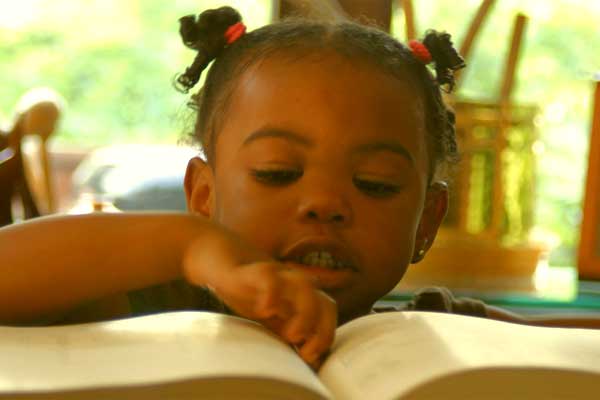
What is new in the Rule of Live (2)
In the Rule of Life the Chapter which innovates most is Chapter 8: Government. In the Congregation all authority has as its reference Jesus Servant (Art 172). Authority is at the service of communion, of discernment, of the accompaniment of the religious in faithfulness to their vocation, and of the manifestation of the Congregations mission in conformity with the charisma of St Michael Garicoits (173). Corresponding to the exercise of authority there is a willing and loving obedience, trusting and inventive. (174)
The new Rule of Life states more clearly the authority of the Superior General (193 195), something which was rather watered down in the previous Rule (Rule of Life 1969, art 180), for the benefit of a certain kind of autonomy for the (Vice) Provinces which seemed to operate like different Congregations.
The 1999 Chapter decided to regroup the (Vice) Provinces and Delegations into Regions: St Michael Garicoits Region, Fr Etchecopar Region, and Blessed Miriam Region. The General Chapter of 2005 decreed, by 25 votes to one, the modification of the Rule of Life so as to give a canonical form to the organisation of the Congregation in Regions. The articles 116, 227, 228, 229, 235, 252, 253 and 254 were revised and became law as from the 1st January 2009.
The Regions are governed by Regional Superiors, who rank as major superiors; there of three in the Congregation. The Regional Superiors are aided by a Regional Council, composed of all the Superiors of the Vicariates of the Region. There is also a Regional Council composed of the Regional council plus a religious elected by Vicariate (RofL 2008, 235-242).
The Vicariates are administered by Superiors who are not Major Superiors. They have a Vicariate Council composed of all the superiors of the Communities in the Vicariate, or failing that, by two Councillors elected by the Vicariate assembly (RofL 2008, 254). Such an organisation assures the two way flow of information, as well as reflection and discernment on concrete situations. In this way, the unity of the Congregation is strengthened.
The creation of Vicariates and their administration highlights the cultural diversity of the Congregation in the different countries in which it is implanted. The movement towards the unity of the Congregation is highlighted and encouraged by respecting the differences. The life of the Congregation lies in the Religious, the communities and the Vicariates. The communities and the Vicariate assemblies ought to be the usual places for communion and participation.
Another novelty in the Rule of Life: the existence of bursars offices at general, regional or vicariate level where necessary (RL 2008, 209-210; 248-251).
During the year of experimentation of the Rule of Life 2008, the establishment of Regions and Vicariates showed up some limits, which the Commission has corrected before submitting the text to the vote in the General Chapter of 2011.
It is proposed to suppress the Regional Council. Experts at the Congregation for Religious whom we consulted told us that there was no obligation to maintain it and that we had given it too much power. That was in reply to the organisation of working commissions, which only really worked in the French Province. In the new set up the Superiors are present in the Regional and Vicariate Councils.
The Superiors of Vicariate had no legal right of existence. There too we consulted the Congregation for Religious; according to them there can be Regional Vicars, responsible for as many Vicariates as necessary. Regional Vicars have the ordinary vicarial power of the Regional Superior, recognised by Canon Law (c. 131/2, 134/1). They are Major Superiors with vicarial power; they can be part of the National Conferences of Religious, etc.
If the 2008 Rule was being applied as it stands, the Regional Chapter of the St Michael Region :Europe, the Holy Land, Africa - would have 65 delegates, twice the number for the General Chapter, not to mention travel expenses. The Congregation for Religious informed us that there is no need for all the Superiors of communities to be ex officio members. Here therefore is the composition of the Regional Chapter which will be submitted for approval during next years General Chapter:
§ Ex officio members: the Regional Superior, the regional Vicaires, the Masters of Novices and scholastics;
§ Members elected by the assembly in each Vicariate: one delegate for five superiors or fraction of five, one deputy for ten perpetual professed or fraction of ten;
§ Members nominated by the Regional Superior; at least one brother-religious in case none of them has been elected;
§ One delegate from all the temporary professed of the Region (RL 2010, art 223 and statute 22 and 23);
§ Furthermore, the election of delegates will be carried out within the Vicariate assembly. For serious reasons the Regional Vicaire can authorise a religious prevented from being present to vote by correspondence on the first round or by delegation on the second round (RL 2010, S.22)
For the General Chapter, the Rule of Life limits the number of ex-officio members to eight, namely: the Superior General, the four general councillors, and the three regional Superiors. As for the elected members, the criteria concerning representation and proportionality have been kept in mind. Consequently the number of thirty delegates is thus reached. (RL 2008, art 178 and S.6).
There is one other novelty in the chapter concerning the government; in future, in the general, regional and Vicariate Councils, there is no more talk of deliberative or consultative votes, but votes by consent or by council. This is the vocabulary in use in the new Code of Canon Law, numbers 627/2 and 127.
The Rule of Life contains an extra chapter, XI: OF PARTICULAR SITUATIONS. It deals with the questions raised by the different rites, particularly for our establishments in the Holy Land and in India with the Syro-Malabar rite. The situation of members of the Congregation called to the Episcopate has also been examined.
We have wanted the communities to prepare for the General Chapter by a holy reading of the new Rule of Life. It is not a question of changing the text of the Rule but of helping ourselves to be more faithful to it, not only in view of the Chapter, but to be ever more faithful to our Betharramite vocation.
In the name of the Congregation, I would like to thank Fathers Ierullo, Moura, Felet and Oyhenart for their work over the past seven years for the revision of the Rule of Life!
Gaspar Fernandez,SCJ
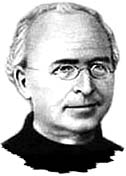 Fr Auguste Etchécopar écrit...
Fr Auguste Etchécopar écrit...
to his sister Julie, Daughter of Charity, 13th April 1879.
Alleluia! My dear Sister, solid and steadfast peace in the faith, hope and love in Our Lord, love!
Today, on this day which the Lord has made and when all his friends rejoice in his joy and glory in his glory, I am happy to celebrate Easter with you, to sing in your heart and with your heart so as to help and strengthen mine. Alleluia to Jesus!
I know that you are always very happy, where ever you are, at the service of the most generous of masters. That says everything! Lets work for him; lets struggle and suffer as he did for us. Lets love him in all and in everyone; then lets place all our trust in his wounds for our regrets, and for our daily pardons. Forward march! Forward march!
Long live Jesus! Our Love! Long live Mary our Hope! May they bless you!
New Life
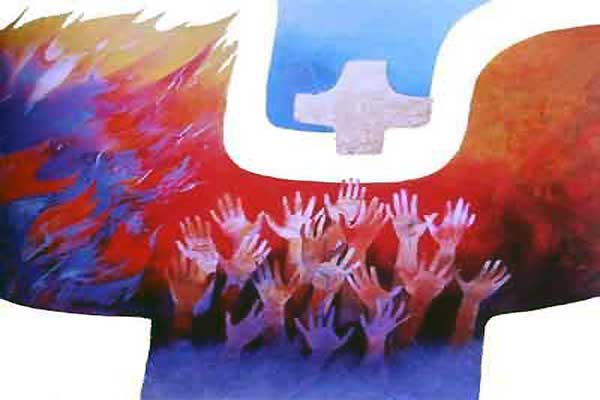
The Passion, death and Resurrection of the Lord was relived in Holy Week and we have now passed into the new life of Easter. The night has passed and a new day has dawned the worst is over but have we absorbed the full implications of our belief in the Resurrection. St Paul puts it bluntly, If Christ did not rise from the dead our faith is futile. (1 Cor.15.17) The Resurrection is not just an historical event, wonderful though it may be, but a continuing experience which has implications for us all. Do we continue to seek the living among the dead ? What are the signs that Christ is among us still, risen as he said.?
The women came to the tomb while it was still dark seeking the body of a dead Christ to finish off the burial rites denied to them on Good Friday. The stone was already moved from the entrance and shadowy forms appeared in the morning twilight impossible to recognise. It was not easy for the women, and more so for the men, to accept the reality of the Resurrection. They had forgotten or perhaps ignored the prediction of Christ that he would rise again on the third day. Mary Magdalene, who was close to him, might have wished for his return to life but even she concluded that someone had stolen the body. John was nearer the mark when he began to believe, on seeing the folded cloths in the tomb, that body thieves would hardly do such a thing.
Recognising Christ is at the heart of our Christian life. We can go through life failing to recognise the real Christ because of the darkness. We see only shadowy forms with a faith that is weak and uncertain. Surrounded as we are by huge failures in every branch of human endeavour, from economic collapse to appalling disclosures in the Church itself unearthed by determined journalists, to dishonest dealings by public figures for private gain, all this and more has added to the darkness and the blurring of our vision. Commitment to the higher things in life has been weakened. The corporal works of mercy are becoming secularised and the command to love our neighbour is diluted into a selfish option. Religious life has not escaped as new ideas emerge to soften the call to follow Christ in a well equipped modern world.
We need to hear again the cry of Easter morn - He is risen, Alleluia.
Feelings of fear and abandonment are soon dispelled by the words of the Risen Christ, It is I, fear not. We look again at the empty tomb and hear our name called as did Mary and Thomas. Christ has plans for us with the promise of a comforter who will lead us into a new life free from the restrictions of past generations. Unless we can look at another human being and recognise in him/her the wounds of Christ we will remain in the dark. The light of Easter dispels darkness and enables us to see more clearly the reality of the Risen Christ. Anyone who claims to be in the light but hates his brother/sister is still in the dark (1John.2.9)
Brian Boyle, SCJ
Parish Priest in Whitnash (England)
Easter Sunday Homily Avril 4th 2010
75 years that Betharram is present in Brazil
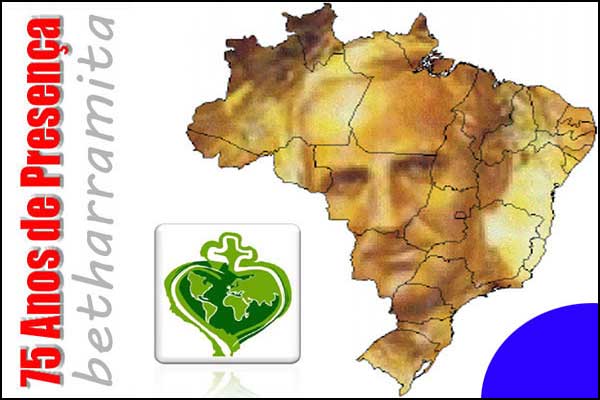
A PAGE OF HISTORY
En 1934, In 1934 the International Eucharistic Congress was held in Argentina, in Buenos Aires. For that event the Betharramite College Saint Josephs hosted the Brazilian delegation, among them the Cardinal Archbishop of Rio de Janeiro, Mgr Sebastiao. The Cardinal was most impressed by the educational work of the Betharramites in Argentina, and asked the Congregation to open a similar college in his archdiocese. The Congregation accepted the invitation and on the 14th March 1935, Fr Jean-Baptist Apetche landed at Rio de Janeiro. He was the first Betharramite to set foot on Brazilian soil.
Father who was used to European climate could not support the heat in Rio; encouraged by the Sisters from the Providence of Gap to make for the interior of the country, he discovered Passa Quatro. And like all those who have been there he was won over by the pleasant climate, the beauty of the countryside and the welcome extended by the local population. Consequently he decided to build a school there, and starting from Passa Quatro, he established the work of St Michael Garicoits in Brazil.
Betharram had the support of the then Mayor, M. Castro and of his father the deputy, Arthur Tiburcio. M. Henri Sajous, architect of the church in Ibarre, native village of St Michael Garicoits, and who at that time had been living in Brazil, was invited to spruce up the existing buildings and transform them in a college which was both plain and nice, and to the liking of the Betharram religious. On the 6th November 1936 Fathers Francis Darley and Dante Angelelli arrived in Passo Quatro to lend a helping hand to Fr Jean Baptist Apetche. And so it was that at the beginning of the new School year, St Michaels College opened its doors to the first pupils, among whom was Jose Newton de Castro who from then onwards has vowed an eternal love for St Michaels College.
In 2010 we are going to celebrate the 75 years that Betharram has been present in Brazil. During all those years there has been no shortage of struggles, fights, obstacles or successes. This diamond jubilee will be celebrated with the strong conviction that Betharrams greatest treasure is its youth. Hundreds of individuals, today scattered throughout the length and breadth of the country have passed through its doors. All have kept alive the memory of the school which, one day passed on to them the message of here I am and of Fiat voluntas Dei (may Gods will be done!)
St Michaels College still carries on, in the midst of actual difficulties; trying at the example of its Patron not to be discouraged, but believing that tomorrow will be better than today. And that is worth while trusting in Divine Providence and in the education of the children and the youth.
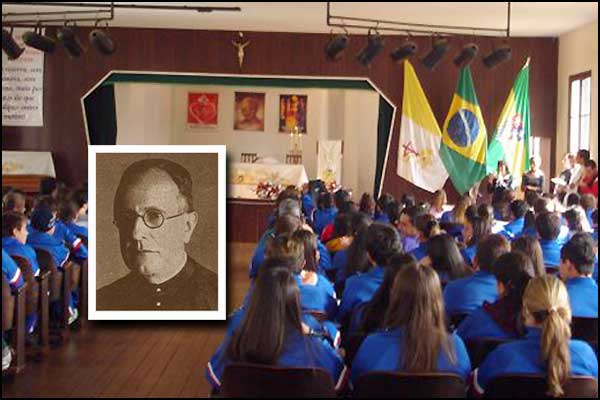
5 minutes with... Father NARCISSE
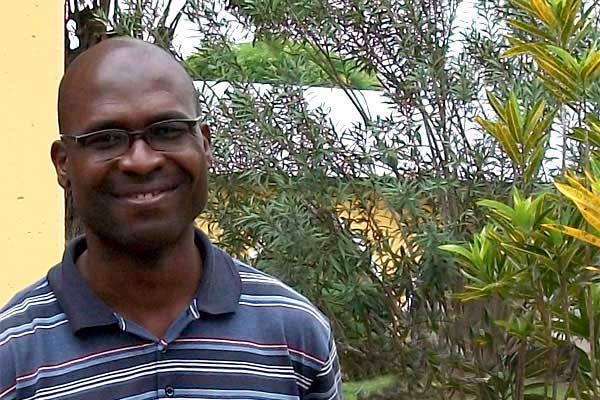
On 21st June it will be a year since the ordination of the first Central African priest for the Betharramite family: Fr Narcisse Zaolo. We wanted to know a little more about his life today and what future he sees for his country.
Nef: Can you tell us something about your vocation: how did you come to know about Betharram?
- My vocation dates from the time when I was very young at the primary school in Gamboula I was fascinated by our Parish Priest at the altar and so I asked him to present me to the Junior Seminary. In the mean time Fr Roger was recalled to France and his successor didnt continue. From the 6th to the 3rd years I was part of the vocations group in Berberati, then in Bossangoa and in Bouar, according to my fathers appointments. When the Vicar General in Bouar told me that I was too old for the Junior Seminary, my determination to progress remained intact. One day a friend from the Fatima basket ball team arranged for me to meet Fr Mario Zappa who was to become my spiritual advisor. As our chats progressed I got to know the Congregation and its spirituality, so much so that I wanted to enter with the Religious of the Sacred Heart. At the end of the year I was admitted to experience community life. What attracted me most for Betharram was the spirituality of the Heart of Jesus. Furthermore I could see the dedication of the Fathers, come sun or rain, nothing stood in their way. It was Forward march all the time!
How did you cope with the transition from initial formation to the ministry?
- I must say that I am very proud of the formation I received in Abidjan, whether in community or in the Centre for missionary formation. The transition to the ministry went off very well thanks to the seniors who are like sign posts for us. With their experience, they help us to surmount certain difficulties. Its true that from time to time I feel homesick for the country where I was trained. I often feel a great longing to see the brothers again. The reality of a formation house is very different from a community engaged in direct ministry.
Of all you received in Ivory Coast, what has made the greatest impression on you?
- What I remember best of Adiapodoume and what seems to be a great help in my present situation is the community meetings; they allowed us to take a fresh look at our projects and our missions, to share joys and sorrows. Decisions are taken together even though the Superior has the last word. These meetings help to create a climate of listening, dialogue and trust.
What is your responsibility in the village schools?
- I am supervising the formation of the teachers, in collaboration with the Regional Teaching College and the Inspectors, and the help of a special partner, UNICEF; then, I keep an eye open so that the teachers respect the rules laid down by the Ministry of Education and that they dont improvise methods of their own; I encourage the Parents Association to keep their promises; finally I pay a visit to each school to pay the salaries and to chair meetings for the good functioning of the schools. UNICEF has also asked me to supervise the schools in Bozoum and Bouar.
How many children does this involve?
- For the schools in the two regions of Bouar and Bozoum, there are in all 34.000 children. As for the 16 schools in our pastoral sector, in which Betharram has invested in the construction and pays the teachers salaries, there are 2.016 children being educated.
What challenges can you see for the Betharram mission?
- In Central Africa the major problem is education and health. No country can make progress when there is a large section of the population illiterate and a population weighed down by sickness and intellectual poverty. Already where health and education are concerned Betharram is making great efforts. No doubt there is need to invest even more in education; for example a college could be opened for the village children who cannot pursue their studies further; alongside there could be a campus, a sort of hostel for students from the countryside. Maybe there could be an Agricultural college for the formations of young unemployed. This could even be a way of being with the young and be a source of vocations.
How do you perceive the difficulties facing the Church in your country?
- The Church in Central Africa is going through a period of turbulence. It is a trial which should help us to put right what is not OK so as to believe. It is a situation comparable to that of a young religious entering the Congregation. At the beginning he is full of enthusiasm. Then, thanks to difficulties and crises, his enthusiasm is sorely tried. In such a situation, the religious has only one solution to turn to Christ so as to rediscover the path of hope. At the heart of such turmoil the Central African Church must be aware of her weaknesses and try to change them into qualities. Thats what we mean when we say starting off again with Christ. Nothing is lost and signs of hope are burgeoning on the horizon. If Christ is risen its not his Church in the Central African Republic which is going to sink into death!
In this year of Priests, what would you say to a young man wondering about a vocation?
- Id love to meet one, because I too was young and was wondering about a vocation. I would be available to accompany any young people who would like to have the same experience. And I would take the opportunity of speaking about Betharram to them!
What aspect of St Michaels message is most eloquent for you today?
- What means most to me today and what I want to share with others is the special nature of our Congregation. Its aim is to seek the perfection of its members and to work for the perfection of others... What is characteristic of us is our spirit of obedience: no delay, no reserve, no backward look, more for love than for any other motive. Our Congregation took the name of the Sacred Heart because it is united to the Heart of Jesus saying to his Father: Here I am to be his helpers for the salvation of souls. It wants to imitate the life of Our Lord by training its members to live in a spirit of humility, obedience, dedication and charity, virtues of the Sacred Heart which keep us in existence and help us to live. I must say that all who have partaken of our source of spirituality have found the beginnings of a life rooted in the divine Heart. There you have our happiness to be shared by others.
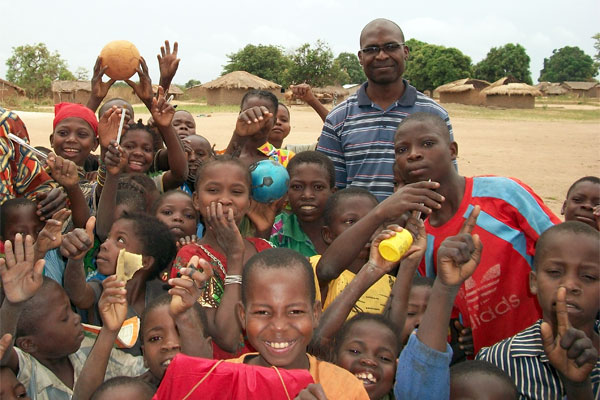
Argentina

Fact & Fiction
Ever since 2001, shooting of films in our houses in Argentina is fairly common practice. So as to make the most of the cheap rate, teams have been coming from Germany, Italy, and Spain and now from the USA. Part of the life of Blessed Jose Maria Escriva de Balaguer, founder of Opus Dei, was shot in the Martin Coronado Castle* (not yet out for the general public). Two episodes out of 12 were filmed in different places in the huge building at Barracas as well as in the crypt of the Basilica. The film Imposters showing in Latin America in FX format as well as several scenes from the full length Argentinean film Le Signal.
St Jose College, national historical monument, is constantly being requested either for filming or for ads. Actually it is quite restricting because the house is literally overrun by thousands of lorries, the filming crew, wardrobes, canteen etc as well as hundreds of individuals. Ah, but when it comes to being paid, they pay us rather generously! For example for a days filming (all 18 hours of it) in the Sacred Heart Basilica at Barracas - they work 18 hours and its the Parish Priest who plays gooseberry they left us 10.000 dollars. This is an important sum of money in view of the feeble revenues of the parish. Of course we are restricted by the code of confidentiality, and so we cant say what goes on until the film comes out and above all we cannot take photos.
Generally speaking, we must beware of the contradictions between the declarations of the film producers and the reality of the filming. This happened when they were making a film for a North American advertisement for a new modal of mobile phone. No matter how hard I tried I wasnt allowed to be present at the filming. It was all about a society wedding and right in the middle of the ceremony, a guy who was watching a football match on his mobile began shouting: Goal! to react to such actions, a few years ago the Diocese of Buenos Aires brought out some rules which are quite strict about this type of reaction. In a word, it is forbidden to film priests saying Mass, for commercial purposes. Yet, despite the risks and the restraints, I pray every day that there will be more filming in our property!
Enrique Miranda,SCJ
* The Castle of Coronado used to be the former rest house belonging to the Community of San Jose College, Buenos Aires. That is where the Fathers used to set up their summer residence from the end of November until the end of March. Its a huge building consisting of 40 bedrooms, built around an open patio measuring 70 metres x15. It derives its name from the elegant turrets on the facade.
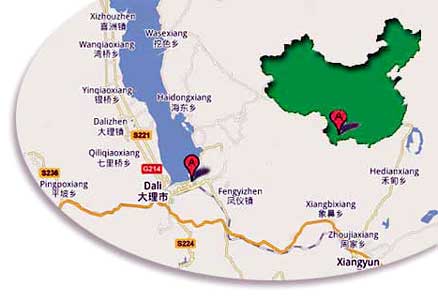 |
4. THE TIMES OF SACRIFICESby |
1936 saw the opening of the Yunnan-fou route Tali represented a huge progress because in the space of one day a car could cover the 420Km which separated the two towns; and it was a far cry from the 13 days on horseback. In April there was a fear that the pirates of 1926 would be repeated. Anarchy reigned supreme in the whole country and armed bands were marching on Tali; defences were organised and the Protestants fled. Happily the marching columns changed direction and left the province, but not without pillaging the two Mission stations, Fr Barcelonnes who had to flee and Fr Barts who was being pursued and had to abandon his two horses with their entire cargo: his personal belongings, his breviary, his portable chapel etc.
Round about the same time, the Lahoue tribe, which had been evangelised by Fr Oxibar, all turned towards Catholicism; in the space of a few months there were more than 10.000 catechumens. Faced with massed conversions, the local Chinese authorities let loose a wave of violent persecutions; those who had converted were thrown into prison (preferably the most influential) they were tortured and stripped of their possessions. All this to force them to renounce their religion, to burn all pious images and, above all, to destroy the chapels. A price was put on Fr Oxibars head as well as on Fr Echaides; they escaped by miracle from several assassination attempts.
But the people of Lahoue stood their ground; few renounced their faith. It was evidently urgent to send in reinforcements. Frs. Bart and Huwel and Brother Xavier set out. Mgr Bonetta, Apostolic Prefect of Keng-Tung in Burma sent catechists and despite the persecution which by now had considerably slowed up, there was an increase in the number of Baptisms: in 1938 there were 1.500, in 1939 there were 6.500 and in 1940 there were 8.000. Other activities opened up and in 1937, the Mission had a junior seminary, 20 primary and secondary schools, 3 dispensaries, 2 cribs, 2 orphanages, and 2 Old Peoples Homes.
In 1938 a new type of trial began: on the 8th April Fr Darriere died at the age of 34. As he lay dying, he recalled Betharram and added: Hold on at all costs to the union of hearts and to charity amongst you One of his last words recall the Fr Etchecopar: Open the window, I want to see the sky On 1st December, Fr Huwel at the age of 31, consumed by a fever and worn out by privations, died in the forest. He hadnt been three years on the mission. Then on the 10th August 1939, it was the turn of Fr Darnaudery, struck down by the fever in Burma, died in the Hospital of Bhams at the age of 35.
Then came the savage deaths: on the 24th May 1940, Fr Bart was murdered at the age of 36: Some thirty brigands, armed with knives, guns, revolvers, broke into the house and took all the Fathers belongings; bound him hand and foot, likewise his catechist who was left standing up. The brigands then shot the Father in the head; next the catechist was shot in the chest, then in the back, finally he died without uttering a cry. These fanatics then returned to the Father, fired two more shots at him, then gathered up the remainder of his belongings and left after setting fire to the house. Here is the last sacrifice: towards the end of November 1942, Fr Miguel was shot and stabbed to death in his residence.
Document Actions









